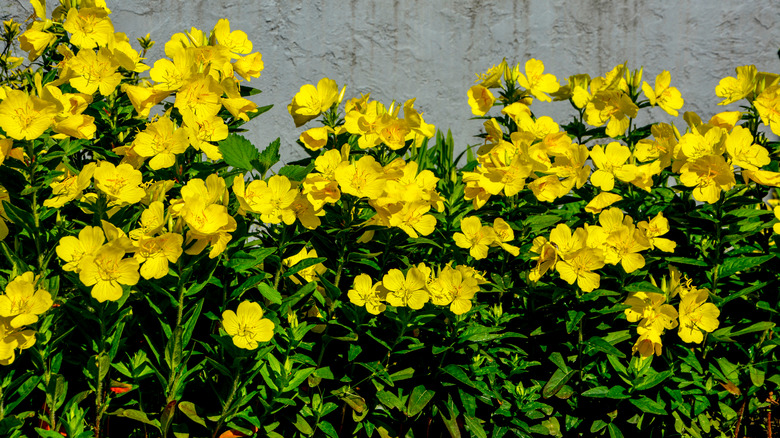A look out into your garden or yard on a cold day in winter may mean lots of gray and white from snow and perhaps a few bits of green from the evergreen trees. There’s certainly a lack of color in most areas. With a bit of careful planning and the right environment, you may be able to change that by introducing evening primrose (Oenothera biennis) to your landscape. Often grown in areas such as roadsides or open fields, this shrub can create a nice pop of color in the right environment during the winter months.
You can add evening primrose to your garden, landscaping border, or even the herb garden you’re growing on your patio. You are likely to notice that right about dusk, this plant’s beautiful, soft flowers will open up and remain that way throughout the evening until the sun rises. This is what gives these flowers their name. This plant is hardy, meaning it can handle many environmental challenges and still do fairly well. For the best blooms and consistent growth, you’ll want to provide the right balance of nutrient-rich soil, water, and fertilizer.
With its fantastic yellow or other bright colors like pink or orange, you’ll quickly find that this is a fantastic plant to bring color to your yard in the heart of winter. If you’re in USDA zones 4 to 9, this is an excellent choice.
Creating the best environment for evening primrose

Evening primrose is typically a smaller plant, getting no taller than about 12 inches in most situations. It’s compact and easily grown in tight places, so you could place it along the border of your home or in a landscaped flowerbed and watch it thrive. However, you’ll want to create the right overall environment to encourage those beautiful bunches of flower clusters.
They do their best with indirect sunlight, and will struggle somewhat with direct sunlight. The better option is to place them in a high-filtered shade or provide them with light shade most of the day. If you have an area of your garden that has afternoon shade, that could work well, too. The next consideration is soil. You’ll need to be sure the soil is moist, which can be somewhat difficult in areas of cold weather. The difficult part is balance. If the roots reach a level of being soggy, which can happen in some wet areas during the winter months, that can create unhealthy conditions for the plant. Ensure there’s a way, then, for soil to drain easily.
Also, provide the right nutrient blend. These flowers and green leaves will do best when they have organic matter mixed into the soil. You can aim for a slightly acidic pH level to get the best blooms for this plant. Use a combination of sand, if the soil is clay-based, along with a bit of organic fertilizer for the best environment.
Strategies for supporting evening primrose success in your garden

To support that pop of color to your garden from evening primrose, there are a few additional steps to take. Note that this is a self-sowing plant. That means it will spread and infiltrate various areas in the right environment. Using a container could help minimize that risk, but otherwise, it could be an excellent way to support natural growth.
If the plant stops producing flowers, that could be due to it entering dormancy. That typically only occurs when there is a long period of cold weather. The flowers may end up freezing, though the foliage will maintain its green coloring. If you live in an area with long bouts of very cold weather, it may not bloom as often. You may also notice a drop in flower production during the summer months since evening primrose doesn’t tolerate the heat as well as it does the cold.
To encourage long-term growth and second and even third-year blooming, grow evening primrose from seed. You can often purchase this plant as a plug to add to your garden, but one of the elements that make this plant so hardy is its ability to naturalize to the area. That means when growing from seed, it becomes used to and adapts well to the environment. A stunning plant that blooms at night, this is quite a special addition to any garden.
